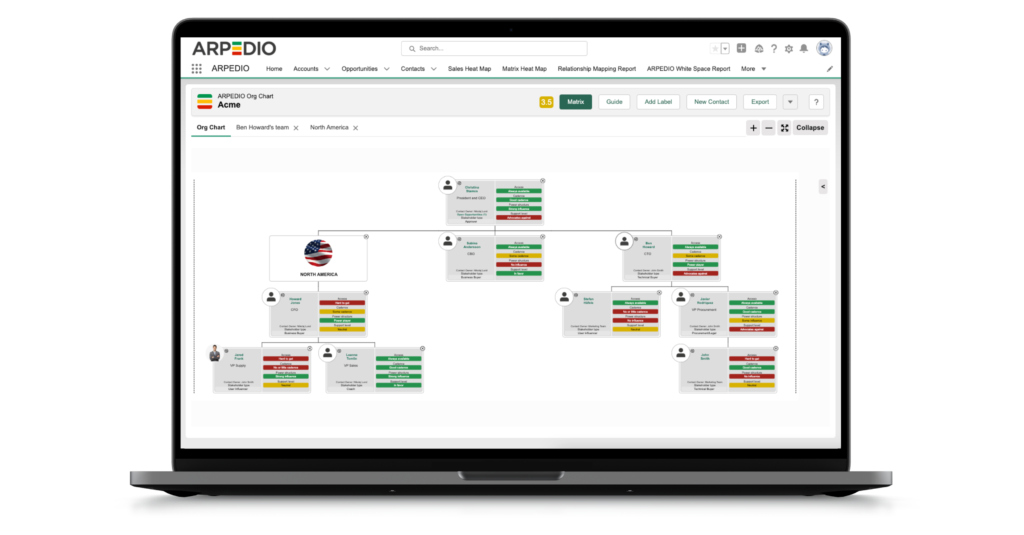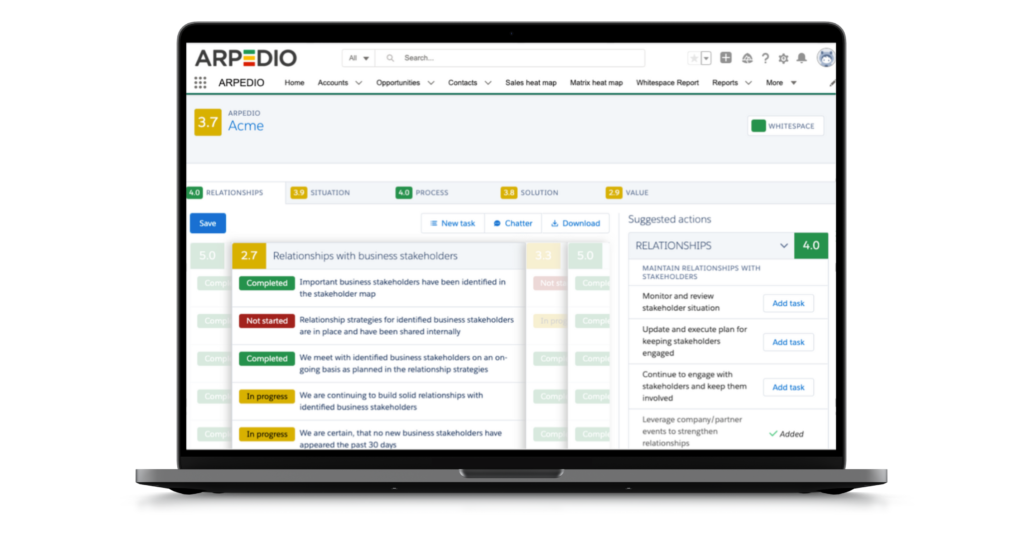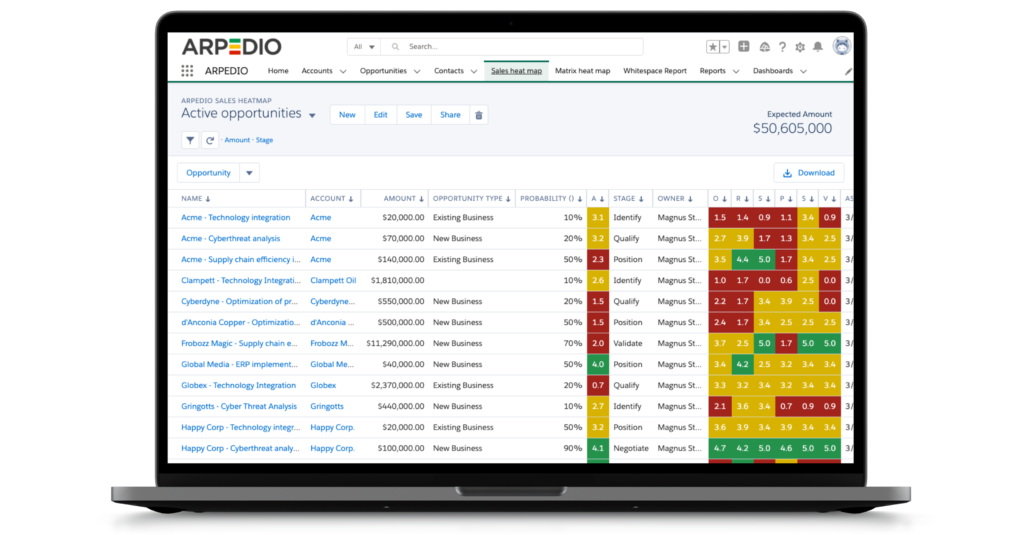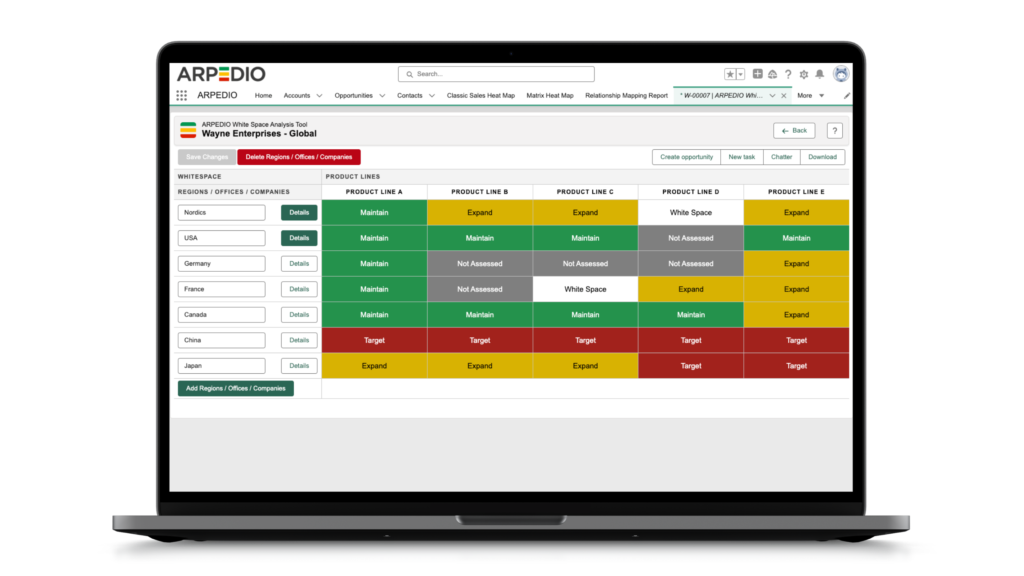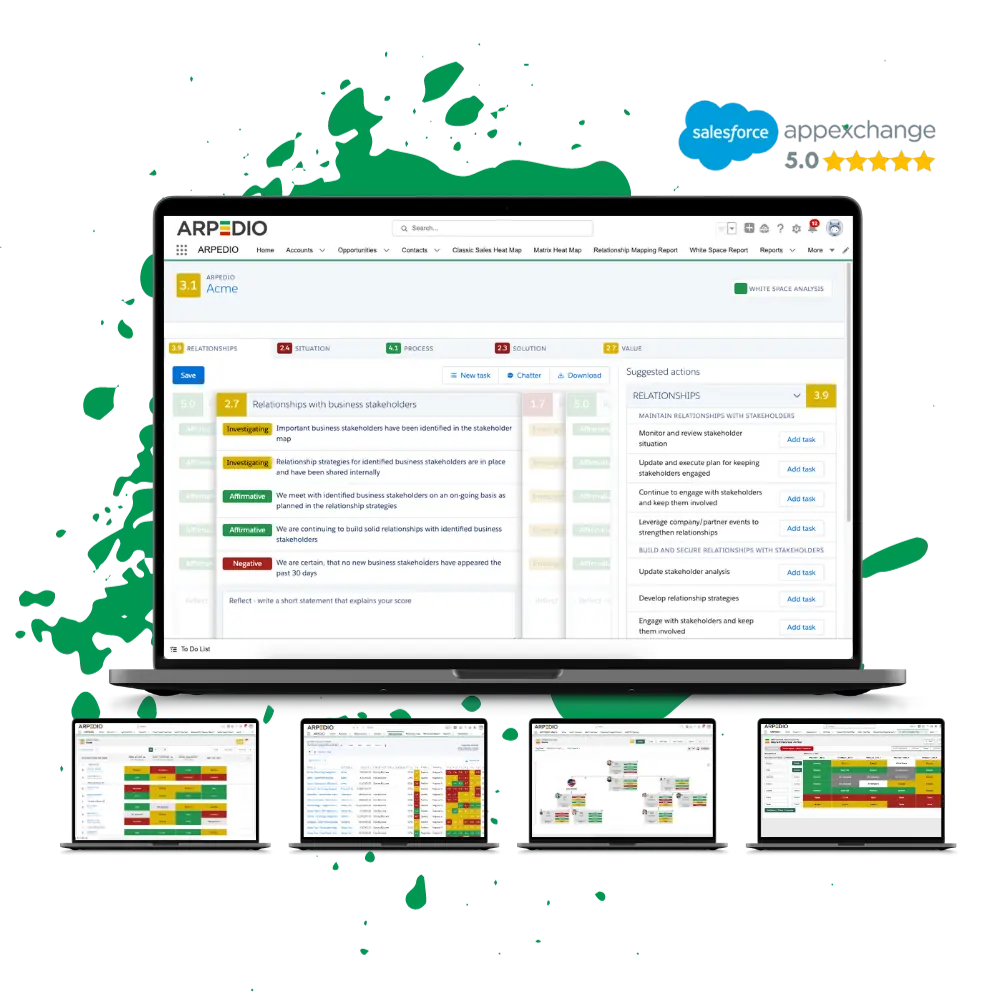Staying ahead of the curve is crucial for success in the world of sales and marketing. Account-Based Selling (ABS) has emerged as a powerful strategy for B2B organizations to target high-value accounts strategically. As we look to the future, it’s essential to anticipate and adapt to emerging trends that will shape the landscape of account-based selling. In this blog post, we’ll explore some of the most significant trends in account-based selling, which can help you and your business to thrive in an increasingly competitive marketplace.
Table of Contents
Emerging trends in account-based selling
In the ever-evolving world of B2B sales and marketing, one strategy that continues to gain momentum and recognition is Account-Based Selling (ABS). This approach, which focuses on targeting high-value accounts strategically, has proven its effectiveness in securing valuable deals and nurturing long-lasting client relationships.
As we look ahead, it’s crucial for businesses to anticipate the trends that will shape the future of account-based selling. In this blog post, we will explore the emerging trends that are set to redefine the landscape of account-based selling. From the integration of artificial intelligence to the art of hyper-personalization, these trends will play a pivotal role in shaping the account-based selling strategies of tomorrow. So, fasten your seatbelts and get ready for an exciting journey into the future of account-based selling! Here’s the trends you need to keep an eye out for:
AI and data-driven decision-making
One of the most exciting developments in account-based selling is the integration of artificial intelligence (AI) and data analytics. As technology continues to advance, businesses are leveraging AI to gain deeper insights into their target accounts. AI-driven tools can analyze vast datasets to identify potential accounts, predict buying behaviors, and even recommend personalized messaging strategies. This data-driven approach allows sales and marketing teams to make informed decisions and tailor their efforts more effectively.
Hyper-personalization
Personalization has always been a crucial element of account-based selling. However, the future will see an even greater emphasis on hyper-personalization. This means going beyond merely addressing a prospect by their first name. It involves creating tailored content, messaging, and solutions that speak directly to the unique pain points and goals of each target account. With the help of advanced customer relationship management (CRM) systems and marketing automation tools, businesses can achieve this level of personalization at scale.
Omnichannel engagement
The future of account-based selling will be marked by a seamless and consistent omnichannel experience for target accounts. Rather than relying on a single channel, businesses will continue to integrate various touchpoints, including email, social media, webinars, content marketing, and more. This holistic approach ensures that prospects receive a cohesive message across their preferred channels, ultimately enhancing engagement and conversion rates.
Collaboration between sales and marketing
Successful account-based selling requires strong collaboration between sales and marketing teams. In the future, businesses will need to break down silos and foster better communication and alignment between these two departments. The lines between sales and marketing responsibilities will blur, leading to more integrated strategies and a unified approach to engaging with target accounts.
Okay. Now that we’ve set the scene, let’s dive a little deeper into the four trends…
AI and data-driven decision-making
The integration of AI and data analytics is nothing short of revolutionary. As technology continues to advance, businesses are leveraging AI to gain unprecedented insights into their target accounts. AI-driven tools have the capacity to analyze vast datasets, mining them for valuable information that goes far beyond what traditional methods can provide.
These AI tools enable account-based selling teams to accomplish several critical objectives, including:
- Identifying potential accounts: AI algorithms can sift through massive amounts of data to identify and prioritize potential target accounts. By examining various parameters, including company size, industry, online behavior, and historical data, AI can pinpoint the most promising prospects.
- Predicting buying behaviors: AI has the ability to analyze past buying behaviors and trends, allowing businesses to predict when an account might be ready to make a purchase. This predictive capability empowers sales teams to reach out at precisely the right moment, increasing the likelihood of closing deals.
- Recommendation of personalized strategies: AI can recommend personalized messaging and engagement strategies based on the unique characteristics and preferences of each target account. This means delivering the right content, through the right channels, at the right time, to maximize engagement and resonance.
- Data-driven decision-making: The data-driven approach enables sales and marketing teams to make informed decisions. It eliminates guesswork and ensures that resources are allocated efficiently, focusing efforts on the accounts with the highest potential ROI.
In essence, AI and data analytics are transforming account-based selling from a relatively static and reactive process into a dynamic, proactive strategy. Businesses that embrace these technologies are not only better equipped to identify and engage with their ideal customers but are also more agile and responsive to market changes.
Hyper-personalization
While personalization has always been a fundamental principle of account-based selling, the future holds a promise of hyper-personalization that takes customization to new heights. Going beyond simply addressing a prospect by their first name, hyper-personalization involves crafting an experience that is so finely tailored that it speaks directly to the unique pain points, goals, and preferences of each target account.
This advanced level of personalization is made possible through the integration of sophisticated CRM systems and marketing automation tools. Here’s how businesses can achieve hyper-personalization at scale:
- Data enrichment: By gathering a comprehensive set of data on target accounts, including their history, challenges, and objectives, businesses can create detailed customer profiles that serve as the foundation for personalization.
- Dynamic content: Hyper-personalization involves dynamically adjusting the content and messaging to suit the specific characteristics of each account. This can include customizing landing pages, email content, product recommendations, and even pricing options.
- Behavioral triggers: Monitoring account behavior and interactions allows businesses to trigger personalized responses. For instance, if a target account visits a particular webpage or downloads a specific resource, an automated, tailored follow-up message can be initiated.
- Real-time adaptation: With the help of AI, businesses can adapt their messaging and offers in real time, responding to changing account needs and behaviors as they occur.
Hyper-personalization is not just a luxury but a necessity in account-based selling. Customers have come to expect this level of personalization, and businesses that can deliver it will not only stand out but also build more meaningful and enduring relationships with their target accounts.
Omnichannel engagement
In the future of account-based selling, the emphasis on omnichannel engagement will play a pivotal role in delivering a cohesive and seamless experience to target accounts. Instead of relying on a single channel, businesses are increasingly integrating multiple touchpoints, including email, social media, webinars, content marketing, and more. The goal is to provide target accounts with a consistent and unified message across their preferred channels, enhancing engagement and ultimately increasing conversion rates.
Here are the key aspects of omnichannel engagement in account-based selling:
- Channel diversity: account-based selling strategies need to encompass a range of communication channels that cater to various account preferences. This could include email for formal communication, social media for engagement, webinars for education, and content marketing for thought leadership.
- Message consistency: Regardless of the channel, the messaging should be coherent and synchronized. Target accounts should feel that they are experiencing a unified journey, no matter where they interact with your brand.
- Seamless transition: Target accounts should be able to transition effortlessly from one channel to another. For example, if they receive an email promoting a webinar, the registration process should be seamless, ensuring a frictionless experience.
- Data integration: A central database that consolidates data from all channels is crucial for tracking and understanding account interactions. This integrated data helps tailor messaging and analyze the effectiveness of different channels.
By embracing omnichannel engagement, businesses position themselves to connect with their target accounts on multiple fronts, increasing touchpoints and enhancing the likelihood of successful engagement and conversion.
Collaboration between sales and marketing
When we talk about account-based selling, the importance of collaboration between sales and marketing cannot be overstated. Successful account-based selling relies on a harmonious relationship between these two functions, where the lines between their responsibilities blur, resulting in a more integrated and unified approach to engaging with target accounts.
Key elements of this collaborative approach include:
- Shared objectives: Sales and marketing teams should have shared objectives and KPIs that align with the overall account-based selling strategy. When both teams are working toward the same goals, it fosters a sense of unity and purpose.
- Communication and alignment: Clear and open communication is essential for ensuring that both teams are on the same page. Regular meetings, shared documentation, and open channels for feedback help create an environment where collaboration flourishes.
- Lead handover: The transition from marketing-qualified leads to sales-qualified leads should be seamless. This handover process ensures that valuable leads are not lost in the transition and that the sales team can pick up where marketing left off.
- Content collaboration: Sales and marketing should work together to create content that addresses the needs of target accounts at different stages of the buying journey. This collaboration ensures that the content is both valuable and relevant.
- Feedback loop: Establishing a feedback loop allows marketing to learn from the experiences and insights of the sales team. This information can help refine marketing strategies and content.
In the future of account-based selling, businesses that can break down the silos between sales and marketing and foster a culture of collaboration will be well-positioned to succeed. This unified approach allows for more efficient, effective, and targeted engagement with target accounts, ultimately driving better results.
Conclusion
When it comes to B2B sales and marketing, account-based selling remains a powerful strategy for businesses looking to secure valuable deals and foster enduring client relationships. As we’ve explored in this blog post, the future of account-based selling is full of exciting developments that promise to transform the way we engage with target accounts. From the integration of AI and data-driven insights to the promise of hyper-personalization, businesses are poised to engage their prospects in unprecedented ways.
The future of account-based selling is not merely about selling to accounts; it’s about building lasting
relationships, delivering exceptional experiences, and maximizing the value of each customer. The trends we’ve explored here are the building blocks of this future, and it’s an exciting journey to be a part of.
As we move forward, businesses that embrace these trends and adapt to the changing account-based selling landscape can find themselves in a world where data-driven insights, personalized experiences, and collaborative strategies come together to form a holistic approach to account-based selling.


